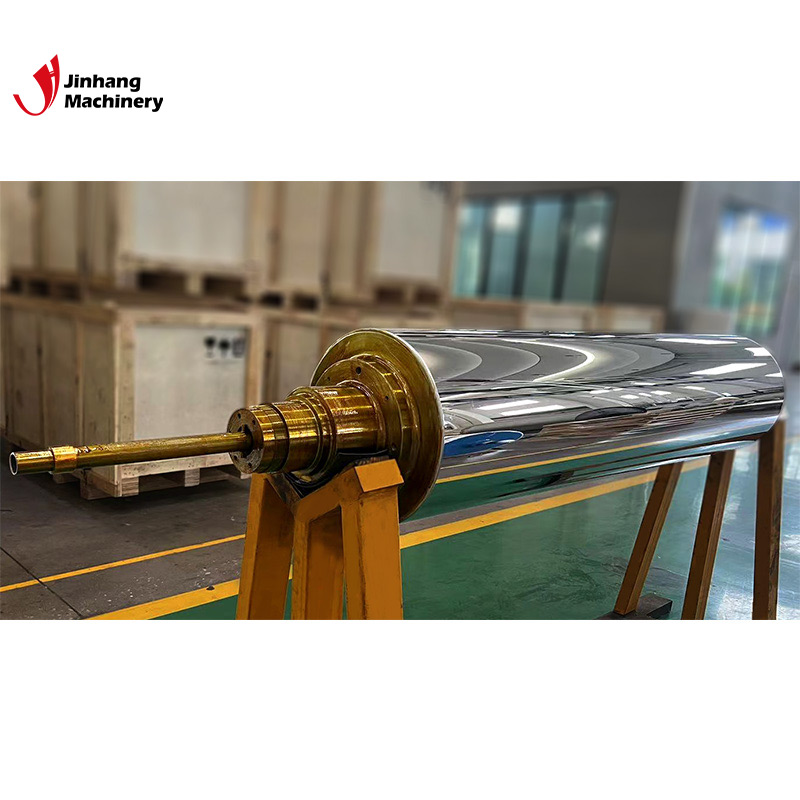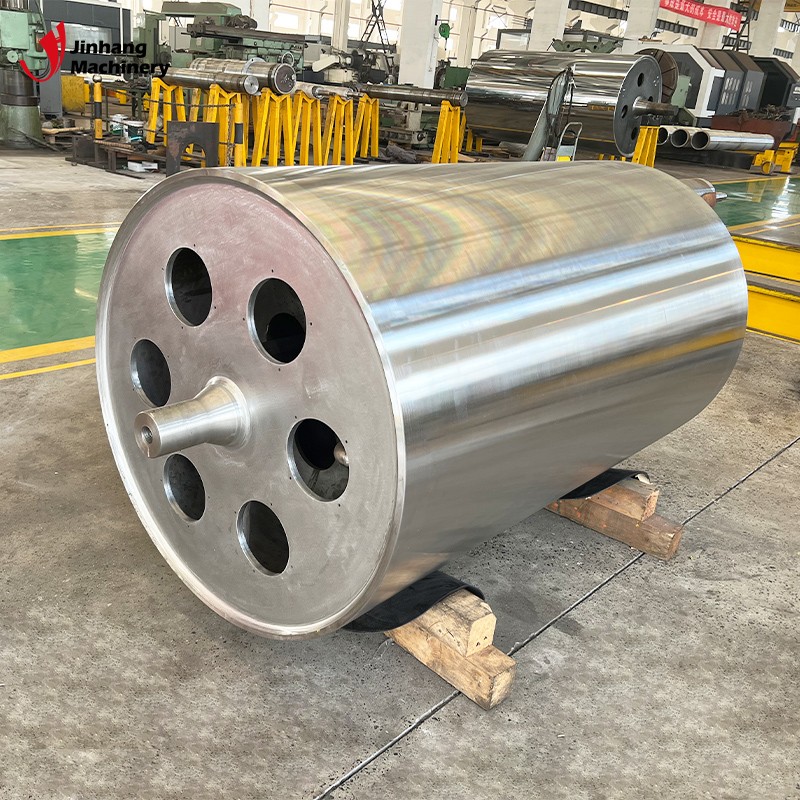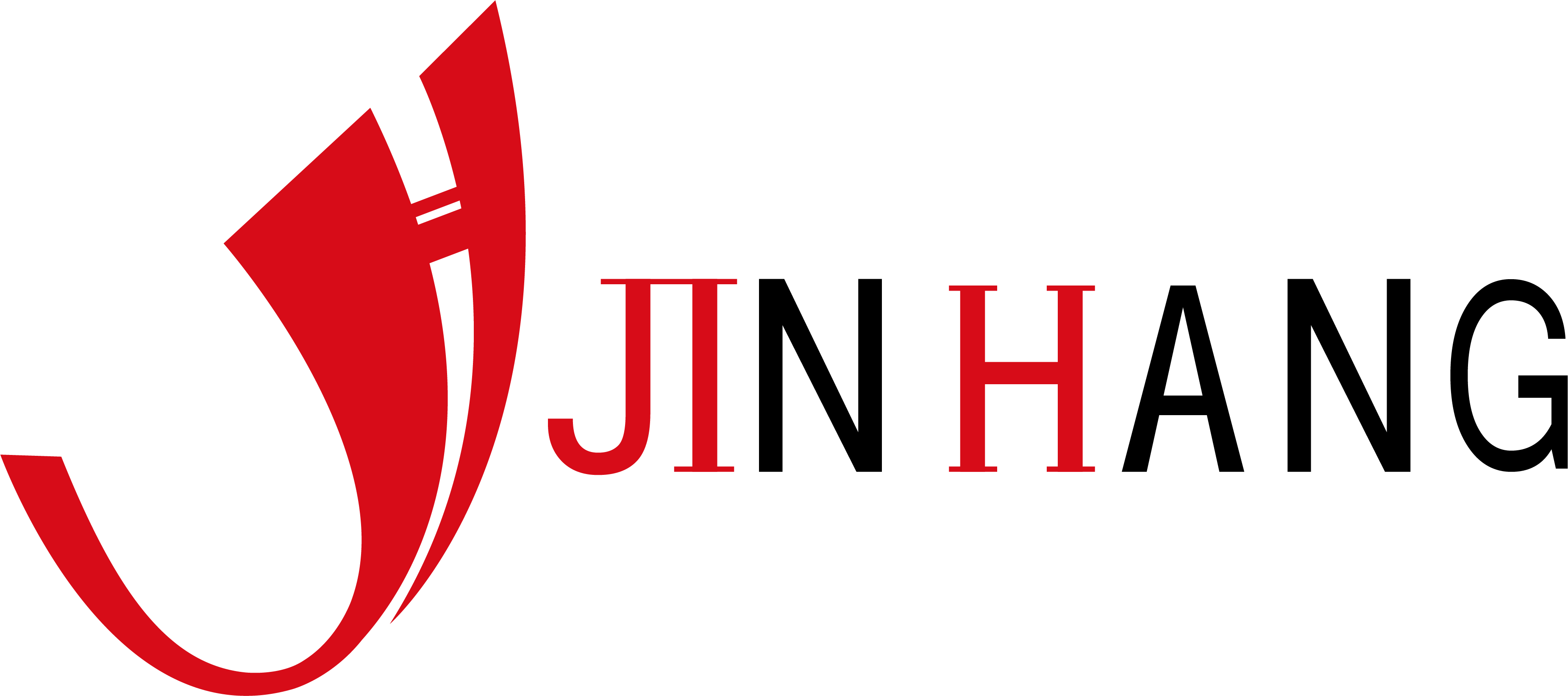In che modo i produttori realizzano i rulli per superficie a specchio?
In modern industry, Mirror Surface Roller is widely used in many fields such as plastics, printing, textiles, papermaking, metal processing, etc. The surface of this roller is as smooth as a mirror, which can effectively improve product quality and production efficiency.
So, how do manufacturers make Mirror Surface Roller? What tools and materials are needed? This article will discuss this in detail.

Definition and Application of Mirror Surface Roller
Definition of Mirror Surface Roller:
Mirror Surface Roller refers to a roller with a highly smooth and flat surface that has been finely processed and polished. Its surface reflectivity is high, which can reduce friction during processing and prevent material adhesion and damage.
Application of Mirror Surface Roller:
● Plastic industry: used for film production, sheet forming and other processes.
● Printing industry: used for surface treatment of printed paper, packaging materials, etc.
● Textile industry: used for flattening of fibers and fabrics.
● Papermaking industry: used for surface flattening and smoothing of paper.
● Metal processing industry: used for surface treatment of metal sheets and coils.

How to manufacture Mirror Surface Roller?
Manufacturing process of Mirror Surface Roller:
1. Select material (steel, stainless steel),
2. Rough machining (turning, milling),
3. Heat treatment (quenching),
4. Finishing (finishing turning, fine grinding),
5. Surface polishing (rough polishing, fine polishing),
6. Surface treatment.
Manufacturing Mirror Surface Roller requires multiple precision processes, each of which plays a vital role in the final quality of the roller. The specific manufacturing steps are as follows:
1. Select material:
The materials used to manufacture Mirror Surface Roller usually select high-strength and high-hardness metals such as steel, stainless steel, alloy steel, etc. These materials have good mechanical properties and wear resistance, and can maintain stability under high load and high temperature conditions.
2. Rough machining:
In the process of manufacturing Mirror Surface Roller, rough machining is carried out first. Rough machining includes turning, milling and other processes, and its main purpose is to process the roller blank into the required basic shape and size. During the rough machining process, high-precision lathes, milling machines and other machine tools are required to ensure the dimensional accuracy and surface flatness of the roller.
3. Heat treatment:
After the rough machining is completed, the roller needs to be heat treated to improve its hardness and wear resistance. Common heat treatment processes include quenching, tempering, carburizing, etc. Through heat treatment, the surface hardness and intrinsic strength of the roller are significantly improved, and it can better cope with subsequent fine machining and wear during use.
4. Finishing:
The roller after heat treatment enters the finishing stage. Finishing includes processes such as fine turning and fine grinding. The main purpose is to further improve the dimensional accuracy and surface finish of the roller. During the finishing process, high-precision machine tools and tools such as precision lathes, grinders, grinders, etc. are required. The quality of finishing directly affects the final surface quality of the Mirror Surface Roller, so special attention should be paid to the control of machining accuracy and process parameters.
5. Surface polishing:
Surface polishing is one of the most critical processes in the manufacturing process of Mirror Surface Roller. Through polishing, the roller surface can achieve a mirror effect, that is, highly smooth and flat, with high reflectivity and low friction coefficient. The polishing process includes rough polishing and fine polishing, and the tools and materials used include polishing machine, polishing liquid, polishing cloth, polishing powder, etc.
● Rough polishing: Rough polishing is the first step of the polishing process, and its main purpose is to remove the rough parts and processing marks on the roller surface. Rough polishing usually uses coarse-grained polishing materials, such as coarse sandpaper, coarse polishing paste, etc., and polishes the roller surface through a polishing machine to initially improve the surface finish.
● Fine polishing: Fine polishing is the last step of the polishing process. Fine polishing is carried out on the basis of rough polishing, and its purpose is to further improve the finish and flatness of the roller surface. Fine polishing uses fine-grained polishing materials, such as fine sandpaper, fine polishing paste, etc., and polishes the roller surface through a polishing machine to make its surface smoother and flatter, with high reflectivity and low friction coefficient.
6. Surface treatment:
In order to further improve the wear resistance and corrosion resistance of the Mirror Surface Roller, manufacturers usually perform special treatments on the roller surface, such as chrome plating, nickel plating, titanium plating, etc. These surface treatment processes can form a hard protective film on the roller surface, enhance its wear resistance and corrosion resistance, and extend its service life.

What are the tools and equipment required to manufacture the Mirror Surface Roller?
A series of high-precision tools and equipment are required to manufacture the Mirror Surface Roller, including lathes, milling machines, grinders, polishing machines and other tools and materials.
1. Lathe:
The lathe is one of the most commonly used machine tool equipment in rough machining and finishing. Through the high-precision machining of the lathe, the roller blank can be machined into the required basic shape and size. Common lathe types include ordinary lathes, CNC lathes, precision lathes, etc.
2. Milling machine:
Milling machines are mainly used for rough machining and finishing of rollers. Through the high-precision machining of the milling machine, the roller surface can be cut and trimmed to improve its dimensional accuracy and surface finish. Common types of milling machines include vertical milling machines, horizontal milling machines, CNC milling machines, etc.
3. Grinding machine:
Grinding machine is one of the indispensable equipment in finishing. Through the high-precision grinding of the grinder, the dimensional accuracy and surface finish of the roller can be further improved. Common types of grinders include surface grinders, external cylindrical grinders, internal cylindrical grinders, etc.
4. Polishing machine:
Polishing machine is one of the most important equipment in the surface polishing process. Through the high-precision polishing of the polishing machine, the roller surface can achieve a mirror effect. Common types of polishing machines include handheld polishing machines, desktop polishing machines, CNC polishing machines, etc.
5. Other tools and materials:
In addition to the above main equipment, the manufacture of Mirror Surface Roller also requires some auxiliary tools and materials, such as sandpaper, polishing paste, polishing cloth, polishing powder, polishing liquid, etc. These tools and materials play an important role in the surface polishing and processing process, and can effectively improve the surface quality and finish of the roller.
Conclusion on Manufacturing Mirror Surface Roller
Manufacturing Mirror Surface Roller is a complex and sophisticated process that requires high-precision equipment, high-quality materials and strict process control.
Through reasonable manufacturing processes and strict quality control, manufacturers are able to produce Mirror Surface Roller with highly smooth and flat surfaces, which are widely used in many fields such as plastics, printing, textiles, papermaking, metal processing, etc., to improve product quality and production efficiency.
